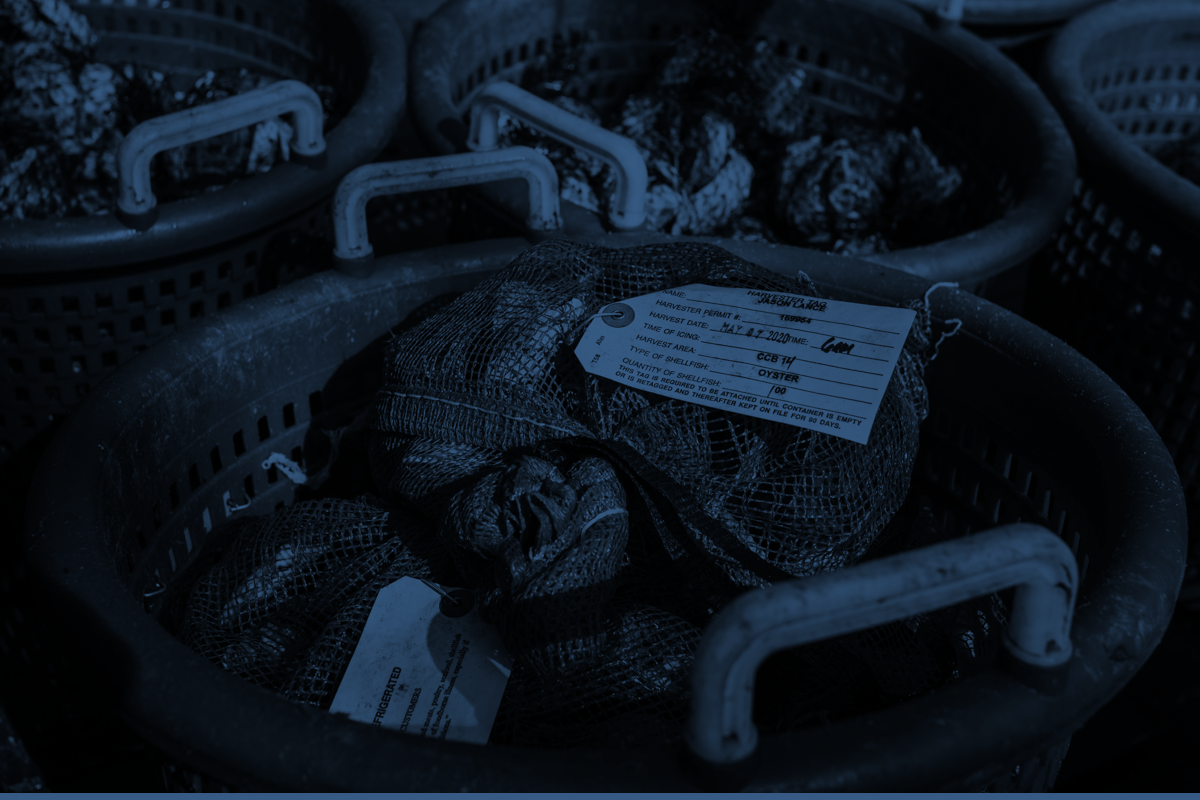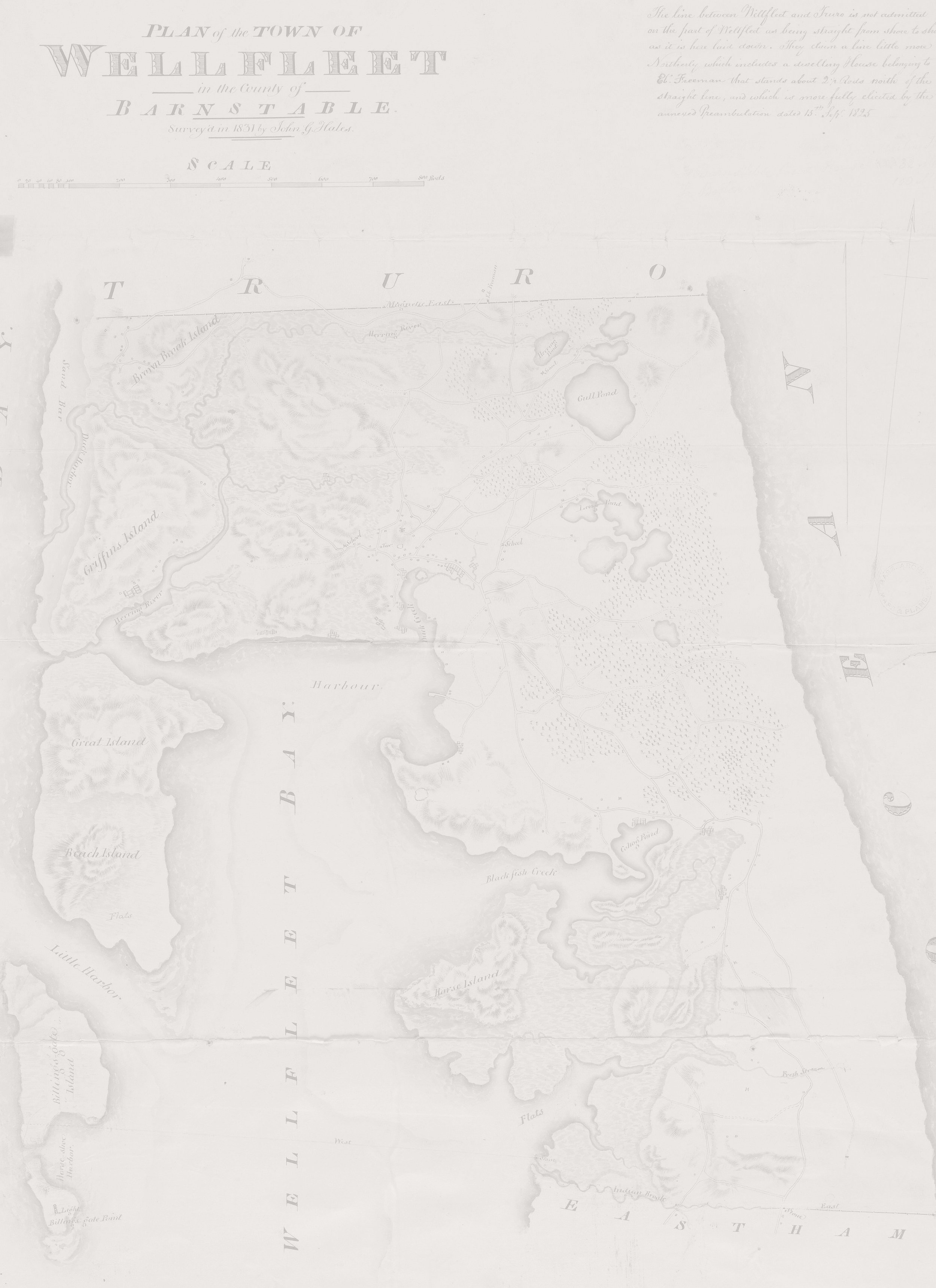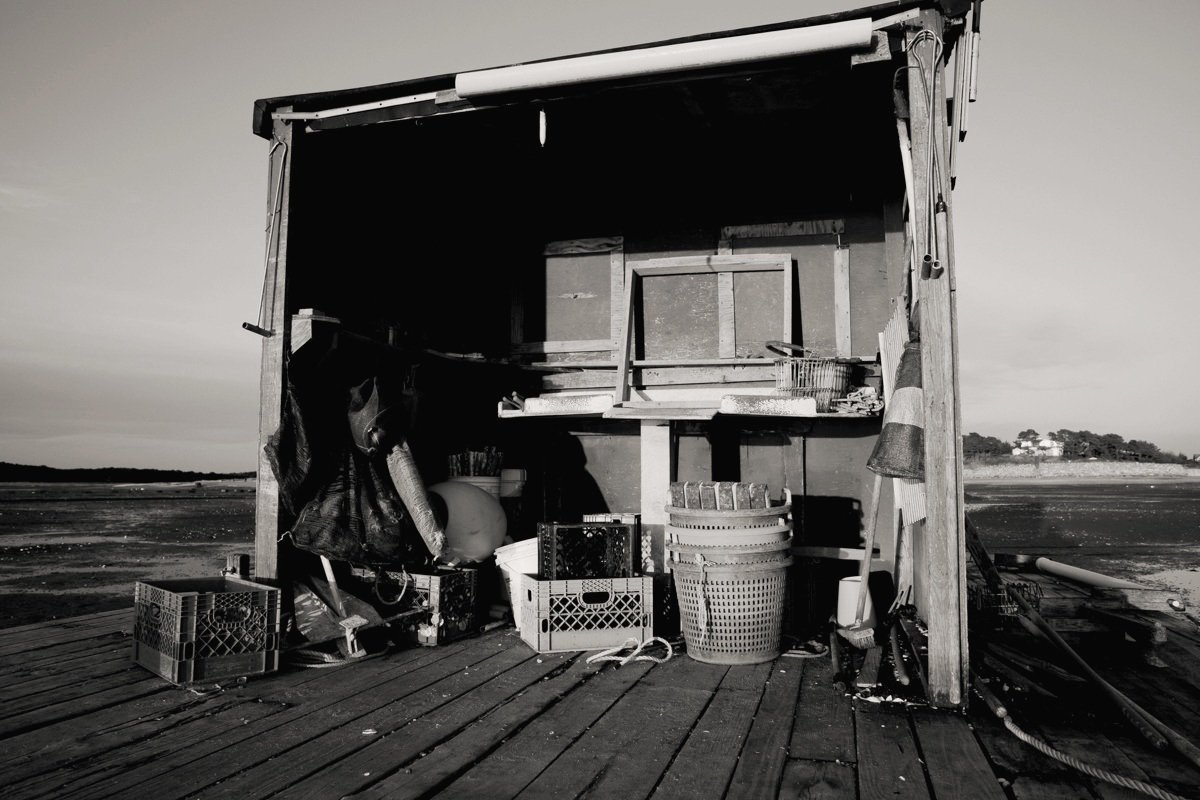
Shellfish & More
There is no place on earth like Wellfleet. An impossibly idyllic New England beach town along the outermost edge of the eastern United States, Wellfleet is nestled within the delicate curl of Cape Cod, bookended between the open expanse of the Atlantic and the relatively calm waters of the bay. It is a place of history and pine trees, sand dunes and kettle ponds, shore birds, salt creeks, sea breeze, and a honey-gold hue of crystalline sunlight that sparkles and dances with the day. It is also a place of oysters. Arguably the best oysters in the world.
Oysters, much like wine or tequila, are unable to be separated from the place where they grow. Their taste and texture is shaped by the elements that surround them. They are creations of terroir and so, here in Wellfleet, that means our large swinging, powerful tides and high salinity sea, our unique glacial soils and dissolved nutrients, our warm waters in summer and chilly waters in winter, our bounty of plankton floating in the currents and our endlessly shifting sandbars all conspire to create the most famous and delicious oysters in all of American history, our namesake bi-valves: Wellfleets. Their signature sweet, briney taste is a tasty and complex legacy like no other.

“Wellfleets were big before the United States was.”
— Rowan Jacobsen,
The Essential Oyster: A Salty Appreciation of Taste and Temptation
Wellfleets: A Brief History
In 1606, when Samuel de Champlain first sailed past Great Island and into what is now Wellfleet Harbor, he named the place “Port aux Huitres”, a phrase which translates directly to Port of Oysters. Of course, long before Europe’s so-called “discovery” of the area, oysters and quahogs and other fruits of the sea were at the heart of native life. The Pononakanet people (part of the larger, more widely known Wampanoag tribe) lived in harmony with the land and sea and dense green forests that once blanketed the Cape, shellfish being chief among their means for a thriving way of life. In fact, Wellfleet was then and remains today one of the few places in the world capable of growing oysters in such great abundance without the aid of human cultivation.
Known in modern times as Wellfleets, oysters from our local waters have been shipped around the world since the middle part of the 17th Century. Great wharfs once stood on the shores of Duck Creek, Mayo Beach, and Blackfish Creek to service an industry that, at its peak in in the early 20th Century, saw some 2,182 acres of local tidal lands being leased as commercial shellfishing operations. It is said that upwards of 300,000 barrels of Wellfleets a day were shipped to ports in New York and Boston for distribution. And it wasn’t just the oysters. Scallops and all sizes of quahogs and clams took their turns as being darlings of the industry at different times in the 19th and 20th centuries. Shellfish, both cultivated and wild harvested, have been paramount to human life in Wellfleet since the beginning.
But it’s the oysters that truly stand out. They were individually wrapped in copper wire and shipped to England for the coronation party of King George the V. Wellfleets were shucked and canned and used as critical provisions for the Union Army during the Civil War. Westward-traveling homesteaders in the 1800s relied on oysters from Wellfleet for shelf-stable protein and nutrition. They were a beloved and critical part of the champagne bar scene in the early 1900s and, as local legend has it, Wellfleets were a difference making super food for the USA’s Mens Hockey team during their “Miracle on Ice” gold medal run against the Russians as the 1980 Olympics.
Today, Welfleet is still home to 104 different commercial shellfishing farms with more than 15% of our local residents earning an income related to aquaculture. All told, some 10 million oysters and quahogs are harvested annually from our waters. Even more telling, wild harvesters (i.e. people who don’t purposely cultivate shellfish via seed and cages and care) bring in half a million oysters and some 650,000 quahogs/clams annually via their rakes and bushel baskets.


